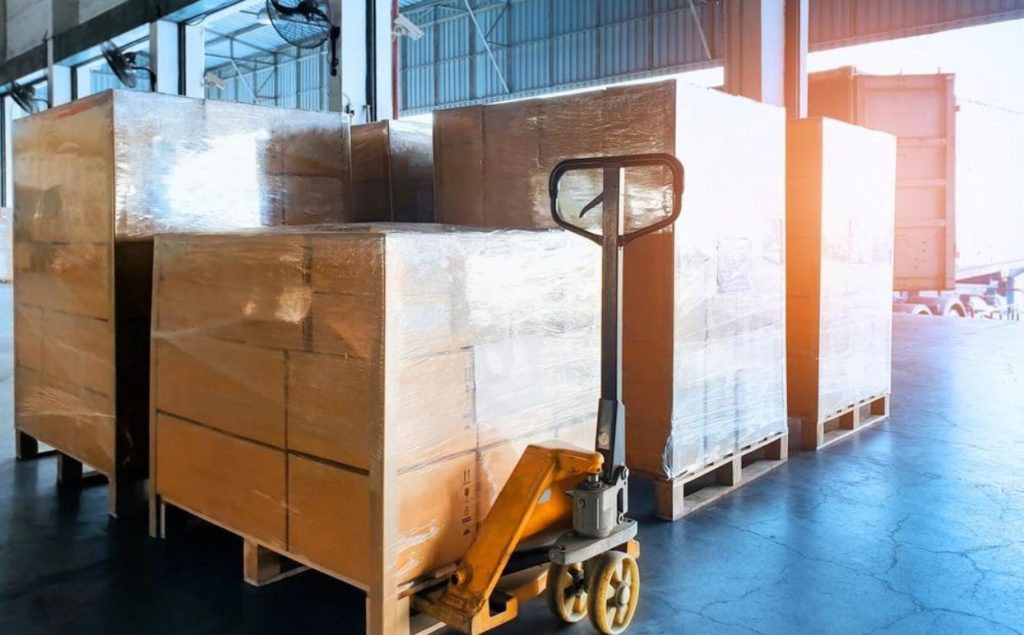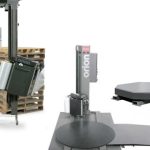Are you interested in learning how to optimize pallet wrapping processes? Look no further! In this comprehensive guide, we will delve into the world of pallet wrappers and stretch wrap machines, exploring their functions and benefits. Whether you’re new to this industry or looking to enhance your existing knowledge, this article will equip you with the necessary skills to become a pallet wrapping expert. Let’s dive in and uncover the secrets behind pallet wrapping machines and stretch wrap technology. With our help, you’ll soon be confidently maneuvering pallet wrapping equipment to protect and secure your valuable goods during shipping and storage. Get ready to revolutionize your packaging operations!
Section 1: Understanding Pallet Wrappers
Pallet Wrappers are essential machines used in the packaging industry to secure and protect goods during transportation and storage. These machines play a crucial role in ensuring the stability and integrity of pallet loads. By using a combination of mechanical and automated processes, pallet wrappers efficiently wrap stretch film around the pallets, providing stability and protection against shifting, moisture, and potential damages.
The main purpose of a pallet wrapper is to firmly hold the products on the pallet, preventing them from tipping or falling during transit. This is achieved by tightly securing the stretch wrap around the entire load, creating a unified structure. Pallet wrapping machines are designed to handle different types of goods, accommodating varying load sizes, weights, and shapes.
Stretch wrap machines, also known as stretch wappers, are specifically designed to efficiently stretch the plastic film while wrapping it around the pallet. These machines use various mechanisms such as rotating turntables, rotating arms, or orbital wrappers to apply consistent tension and achieve optimal film stretch. The stretch film’s elasticity allows it to conform to the shape of the load, ensuring a secure and tight wrap.
Pallet wrapping machines, or pallet wrappers, come in different configurations to suit different packaging needs. Some machines are fully automated, requiring minimal human intervention, while others are semi-automatic or manual, allowing operators to control the wrapping process. Pallet wrappers offer customizable features such as adjustable film tension, pre-stretch capabilities, and programmable wrapping cycles, providing flexibility to meet specific packaging requirements.
Understanding the different types and functionalities of pallet wrappers is crucial for businesses involved in logistics and supply chain management. By selecting the right pallet wrapping machine or stretch wrap machine, companies can optimize their packaging processes, reduce product damage, and enhance overall efficiency during transportation and storage. Mastering the operation and capabilities of these machines is key to ensuring the safe and secure delivery of goods.
Section 2: Key Features and Functions of Stretch Wrap Machines
Stretch wrap machines are an essential tool for efficient pallet wrapping. These machines come with a range of key features and functions that make them a valuable asset in any warehouse or distribution center.
-
Automatic Film Dispenser:
One of the primary functions of a stretch wrap machine is its ability to dispense the stretch film automatically. This feature eliminates the need for manual handling of the film, saving time and reducing the risk of injuries. With the automatic film dispenser, the machine can precisely measure and apply the right amount of stretch film, ensuring a secure and stable pallet load. -
Variable Wrapping Programs:
Stretch wrap machines are equipped with various wrapping programs to cater to different load types and requirements. These programs allow users to adjust variables such as the number of film rotations, pre-stretch levels, and film tension. The ability to customize the wrapping parameters ensures that each pallet is wrapped optimally, providing maximum load stability and protection. -
Powered Turntable and Carriage:
Stretch wrap machines feature a powered turntable and carriage system, which facilitates the rotating and vertical movement of the pallet during wrapping. This mechanism ensures that the stretch film is evenly distributed around the load, minimizing the risk of damage or shifting. The powered turntable and carriage also make it easier to wrap pallets of varying sizes and shapes.
By understanding the key features and functions of stretch wrap machines, businesses can make informed decisions about which machine would best suit their wrapping needs. These machines not only enhance the efficiency of pallet wrapping operations but also contribute to the overall safety and security of goods during transit.
Section 3: Best Practices for Operating Pallet Wrappers and Stretch Wrap Machines
-
Ensure Proper Machine Setup:
When operating pallet wrappers and stretch wrap machines, it is essential to start with a well-set-up machine. Begin by checking that the machine is positioned correctly and securely on a level surface. Make sure that the power supply is connected and functioning properly. Additionally, ensure that the machine has the appropriate settings for the type and size of pallet being wrapped. Taking the time to properly set up the machine will help prevent any issues or complications during the wrapping process. 
Use Suitable Stretch Wrap:
Choosing the right stretch wrap for your pallet wrapping needs is crucial for achieving a secure and stable load. Consider factors such as the type of product being wrapped, its weight, and any specific requirements for transportation or storage. Select stretch wrap with the appropriate thickness and elasticity to ensure optimal load containment. By using a high-quality stretch wrap that suits your specific application, you can significantly enhance the overall efficiency and effectiveness of the pallet wrapping process.- Shrink Wrap Machine
Apply Proper Wrapping Techniques:
To effectively wrap a pallet using a pallet wrapper or stretch wrap machine, it is important to employ proper wrapping techniques. Start by positioning the leading edge of the film at the bottom of the pallet and securely attach it to the load. Control the tension of the stretch wrap to ensure that it is applied uniformly throughout the wrapping process. Overlap each layer of stretch film slightly to enhance load stability. Finally, secure the end of the film to prevent unraveling. Implementing these proper wrapping techniques will result in a tightly wrapped pallet with excellent load integrity.
Remember, following these best practices for operating pallet wrappers and stretch wrap machines is key to achieving efficient and secure pallet wrapping. By taking the time to set up the machine correctly, selecting suitable stretch wrap, and applying proper wrapping techniques, you can master the art of pallet wrapping and ensure that your loads are safely prepared for transportation or storage.

